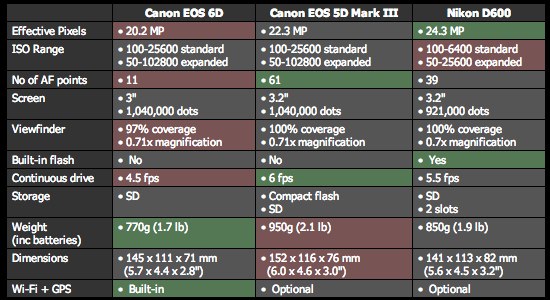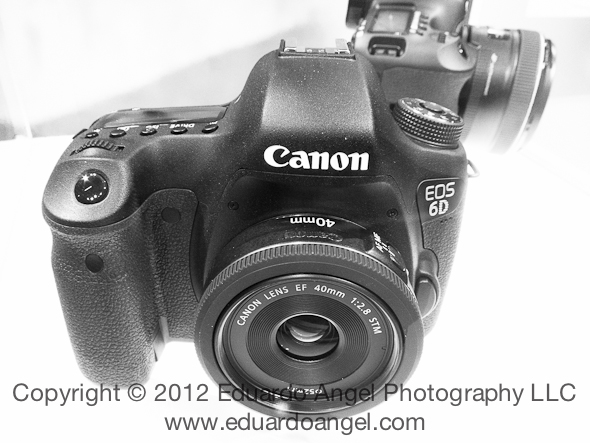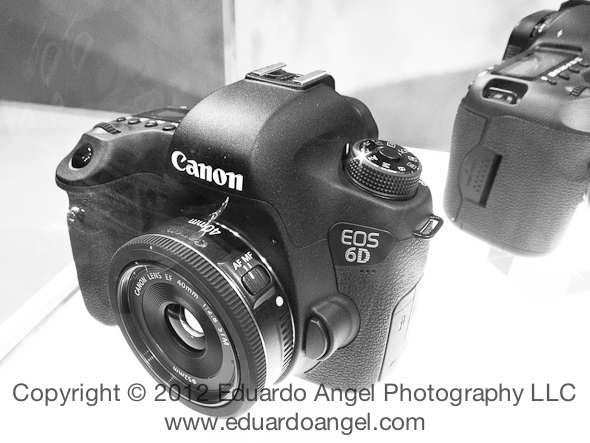Video
Life after Photokina: Canon EOS 6D.
Since we arrived from Photokina we have been bombarded with questions about the 6D. “Did you see it?” “Do you like it better than the 7D?” “Should I buy it?”
Here’s a very quick overview: The megapixel count on Canon’s EOS 6Dis virtually identical to the Mark III, but it is 50% cheaper and 20% lighter. The size is very similar to the 60D, without the tilting and swiveling screen, which in my opinion is one of the strongest selling points of the 60D for video shooters. It is great to see a DIGIC 5+ on this camera, which is approximately three times faster than DIGIC 5, and 17 times (yes, seventeen times) faster than the DIGIC 4 found on the Mark II.
Handy comparison chart from DPReview.
By the way, if you are a photographer and you are not shooting video yet, stop right now and read this “This is why photographers need to learn video right now.” After you finish the article, sign up for any of our upcoming video workshops (here and here).
The 6D matches Nikon’s D800 4.5fps. This is hard toi explain but somehow the camera feels as light as the Rebel bodies without feeling cheap.
Click to keep reading
The mode dial lacks a third Custom Mode but gains a “CA” (Creative Auto) mode. When compared to the EOS 5D Mark II, the 6D offers some important advantages: a much higher maximum ISO (51200 vs. 6400), a larger LCD screen (3.2-inch vs. 3), HDR, GPS, faster in startup/shutter lag/fps, and much lighter. While the Mark III does not suffer from aliasing and moiré pattern, it is likely that the 6D will suffer from the same issues as the Canon 7D and the Mark II.
An app for both Android and iOS will allow users to remotely control the camera, which also included GPS and Wi-Fi connectivity which according to employees at Canon’s Photokina booth will be able to transfer a full RAW + JPEG in under three seconds. I definitively want to see that since previous experiences with other systems have not been that great.
If this is true, I can see this camera, becoming a fantastic option for photographers wanting wireless tethering solutions without additional adapters/transmitters. Check this great article explaining the EOS 6D’s integrated GPS system.
Finally, I believe that adding my workhorse 24-105mm f/4L USM zoom lens to the 6D kit is an excellent move from Canon’s part. What’s your take? Is the 6D a step-up from the EOS 7D, or a step down from the Mark III? Please share your comments below, and let us know if you are joining us next Monday October 15th at 1pm EST on our “Photokina Trends Hangout.”



